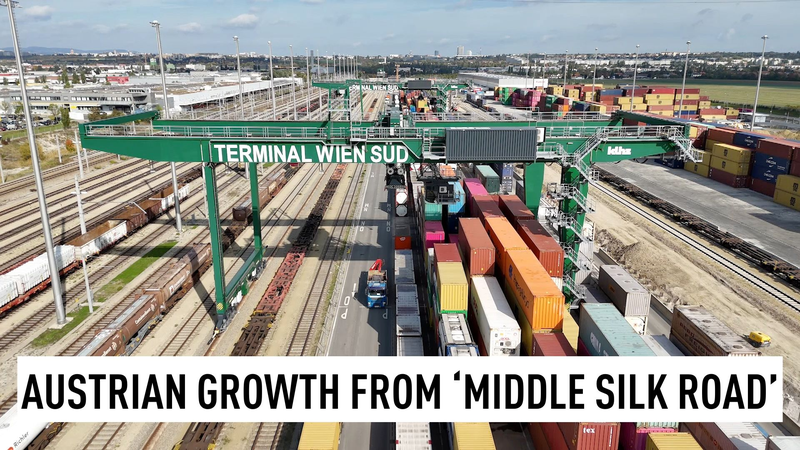Austria’s Rail Cargo is Riding the Middle Silk Road
Trade along the Silk Road’s middle corridor—linking China and Europe via the Caspian Sea—is getting a major glow-up. Since the Russia-Ukraine conflict sparked new trade routes, OBB Rail Cargo Group, Europe’s No. 2, has multiplied its volumes several times in 2024 and 2025! 🎉
“We see especially a very dynamic growth in 2024 and 2025,” CEO Clemens Först told CGTN.
More and more containers from the Chinese mainland are rolling into Vienna’s South Terminal, taking a path that skips Russia and Ukraine. Think of it as the highway detour of global trade: a bit longer, with more checkpoints, but opening fresh lanes for your favorite gadgets, fashion hauls, and more.
Why the detour? Ukraine-related sanctions made the trans-Siberian northern corridor tricky. So OBB tapped into the trans-Caspian middle corridor—a route that crosses multiple borders and bodies of water like the Caspian Sea. Sure, it brings some bottlenecks, but there’s room to speed things up and smooth out customs processes.
For young entrepreneurs in South Asia and Southeast Asia hustling on e-commerce platforms like Lazada or Flipkart, faster, reliable shipping means you can get trendy tech, K-pop merch, or eco-friendly goods across continents without waiting ages. 🌐📦
Looking ahead, OBB is all set to fine-tune this route—think digital customs clearance, streamlined transfers, and better rail-sea coordination. Before you know it, your next online splurge might just arrive faster than you finish your biryani! 😉
The Silk Road’s middle corridor is no longer a back alley—it’s the main stage, and OBB Rail Cargo is leading the encore. Keep your eyes on Vienna’s South Terminal; the goods are rolling in faster than ever.
Reference(s):
Austria's rail cargo 'multiplies volumes' on the middle Silk Road
cgtn.com




